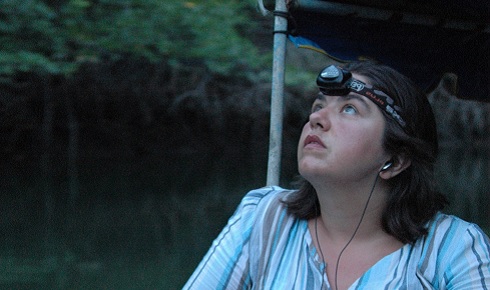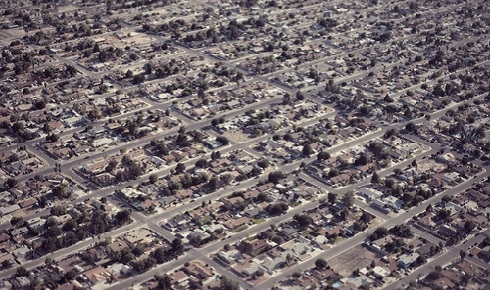“There were at least three papers in 2019 that said coronaviruses might be a real problem in south China”

Professor Kate Jones says a woeful lack of communication between public health bodies and ecologists is failing to prevent spillover of animal diseases into human populations
July 8th 2020 X
Professor Kate Jones is one of a small number of researchers in the world working at the interface between ecology and public health. Her work explores the relationship between biodiversity loss, climate change and human health, particularly outbreaks of infectious diseases. Before the emergence of SARS-CoV-2, Jones and her colleagues had repeatedly warned that environmental degradation around the world was increasing the likelihood of ‘spillover’ events and pandemics.
Her work on diseases like Ebola has shown it is possible to predict spillover events and outbreaks with a high degree of accuracy. However, she says to prevent devastating disease outbreaks becoming more common, public health organisations, ecologists and conservationists must work together in a way they are failing to do at the moment.
Hi Kate – how has your lockdown been so far?
Well the first part was pretty insane as I was doing a lot of press work – I really felt nobody was making the link between the destruction of the environment, the homogenisation of biodiversity, and the pandemic. There are not that many people that are central to that question, so my workload just tripled. It's calmed down a bit, but now I have to record all my lectures for next year myself, in my kitchen!
As you say, you are really central to this question about how our impact on the natural world increases the risk of zoonotic diseases and pandemics. COVID-19 seems to have taken most nations by surprise, even though you've been warning about this for many years. How has it felt for you watching the nightmare scenario you warned about actually happen?
It's a really good question. It was never certain, it wasn’t inevitable, because for an event like this to occur so many things have to line up exactly. But we have been saying that this is a risk. Pandemic flu, which was more likely than this, is something people have allegedly planned for. But even though the risk is low, as we’ve seen, the effect of a new pathogen can be massive.
I feel sort of…guilty, actually. That I didn’t say more or make myself heard. There’s no ‘I told you so,’ it’s actually a feeling of ‘could I have shouted louder?’ Although we have been predicting it for a long time, I don't think anyone really, really thought that this would happen.
Having said that, we all just have really short memories. AIDS killed millions of people, that was another zoonotic pathogen. And there was SARS, H1N1. I don't know what happens in our brains. Why are we surprised when this happens?
 Researchers have failed to make the links between biodiversity loss and human disease clear, says Jones
Researchers have failed to make the links between biodiversity loss and human disease clear, says Jones Before we talk about SARS-CoV-2 more specifically, can you tell us how our impact on the natural world is increasing the risk of zoonotic diseases spilling over into the human population?
I’m cautious about the idea of there now being more zoonotic pathogens, because the more you look, the more you find. But the evidence suggests at the moment that we are having more outbreaks of infectious diseases generally, and more from new or emerging diseases.
It’s not just about our encroachment into wild spaces. If you're going into an area that’s biodiverse like a jungle, you have got loads of species there and the likelihood of you finding the one that's got a transmittable virus is probably quite low, unless you hunt them or you’re targeting them specifically.
But in degraded landscapes, you get a filtering of things that can survive in these weird landscapes. The ones left have adaptations which makes them able to survive there, such as species that can disperse or those with fast life histories. And these organisms host a load of pathogens which are dangerous to us. So actually we are creating landscapes which are more suitable for the species which can transmit pathogens to us.
Urban areas are very weird degraded environments for species to live in, with many species of rodents in cities carrying leptospirosis for example. So, the risk is there, it's just that we have hidden that risk a bit with better public health practices. But that then breaks down in areas which don’t have that. And the chances of disease spilling over and then causing a problem are infinitely increased the more people you have.
This all falls quite uneasily between fields: it's not quite an ecological problem and it's not quite a public health problem. It fits into this very uneasy place in biology which doesn't really have a home.
Yes, just looking at your profile on the UCL website, it's a really interesting mix of words that you don't see very often. To most people, ecology and medicine are on separate ends of the life sciences spectrum.
I think that’s the problem, and I'd like to say that it's not just the public health people’s fault, it’s the ecologists fault too! They haven't made the links clear to the public health people about the importance of the environment and ecological systems to human health. They have, in a way, siloed themselves within IPBES (The Intergovernmental Science-Policy Platform on Biodiversity and Ecosystem Services) where there are few explicit links to human health.
The silo-isation of our work is a massive problem. The public health people don't see the relevance of ecology – some don't even know what it is! They’ve understood, rather recently, the link between human health and climate change – there’s a Lancet Commission and reports every year on that. But the impression is still that public health people treat proximate causes of disease not ultimate ones, and that's the same in the development community. Many still don't get this nuanced link between ecosystems and human health – it's got this cultural baggage of ‘hugging a tree’ and Gaia theory.
Is it possible to predict the emergence of new diseases with any accuracy? And with more resources and attention directed at this interface of ecology and health could we have prevented the emergence of COVID-19?
A good example is predicting predicting Lassa fever, an acute viral haemorrhagic illness caused by Lassa virus. It’s a seasonal illness, but in trying to understand disease outbreaks, the role of the actual host, the rat, has often been ignored. They are an agricultural pest that respond to the changes in rainfall. Only recently have people started to think about this in terms of climatic variation, plotting it out with seasonal patterns and climate change.
You have to think about the actual animal, and how the animal is responding to land use change and climate change to understand the ecological hazard. Then you can ask how many people there are and what they are doing, to understand potential exposure to the disease. Then you can add the susceptibility, for example how much health care is there should there be an outbreak, and where it’s likely to spread to.
If you put ecological hazard, human exposure and susceptibility together, you've got a really good chance of understanding risk and predicting epidemics. In our paper in Nature Comms last year, we did a first-principle stochastic model to say: we know roughly what species Ebola is found in, we know what the reservoirs are and the secondary reservoirs are, so let’s do a model to show the probability of those in habitats across Africa. Then let’s think about where the humans are, where previous outbreaks have occurred, and what we know about how Ebola spreads in humans, the basic epidemiology.
Then you run it for the whole of Africa, let people move along these grid squares, along transport networks. You then have the probabilities not just for predicting where spillover might happen, but where secondary cases might occur. We finished that around 2017-2018 and have predicted the areas where all the Democratic Republic of Congo outbreaks have occurred since then.
So I don't think it's difficult. I just think we've been doing it the wrong way. With coronavirus, there were at least three papers in 2019 that said this could be a real problem in south China. This is where I think there is a failure of public health and ecology, a failure of communication rather than of science.
 Degraded landscapes are conducive to the species that cause human health problems, says Jones
Degraded landscapes are conducive to the species that cause human health problems, says Jones How do you go about finding where a new disease has actually come from, and what do we know about the origins of COVID-19? I've read a lot but none of it seems to be conclusive.
Tracing back origins is notoriously tricky. Every species has pathogens and shares pathogens with other things. You have to survey quite a few different species before you find one that is close enough to be able to say for sure that it’s a source.
With the lack of resources and the lack of surveys that have gone on in wild populations, or in domestic populations, you’re reliant on people having done some sampling and putting it on GenBank, or things like the PREDICT Project. Ultimately, not enough money is put into surveillance. We don’t know enough about what pathogens different species have.
With COVID-19, I think it’s a bit early to say, but my bet would be that it has come from a bat at some point. Bats have a greater diversity of coronaviruses than any other group of animals. There are about six or so coronaviruses that have leapt over to humans from bats, including what is now the common cold, and three of those – MERS, SARS, and SARS-CoV-2 are causing serious problems.
Where does the pangolin come in?
Well, the pangolin comes in because one of the SARS-CoV-2 spike proteins has got a very similar structure to that of a similar virus found in pangolins. So scientists couldn't figure out how the virus got that from the original SARS-like bat coronaviruses. I think as we sample more things, we will piece that puzzle together.
What options are there to reduce the likelihood of future pandemics?
I think focusing on wet markets and the wildlife trade is, in some ways, part of an agenda to get wildlife trading stopped, and I am for that, but whether it's got a really big impact on zoonotic emergence, I don't know. If you stopped wet markets or wildlife trade right now, would you stop zoonotic emergence? They are just one very specific link in the chain. The exposure is probably happening in agricultural areas or in people just going about their daily life in degraded landscapes.
And are we saying we only care about the ones that emerge in that way, or affect the UK? To go back to Lassa fever, it's a haemorrhagic fever that kills up to 300,000 people per year. 300,000 people per year! It’s got nothing to do with the wildlife trade. Because it's in the global south, it doesn’t ever seem to be high on the global agenda. It’s a very complicated question, and very political, and navigating that is really difficult at the moment.
Do you think this crisis is the moment we start to take this link between ecological damage and disease outbreaks seriously?
I hope so. I’m just finishing off an article for the British Medical Journal. That's massive progress.
Richard Horton, the editor of The Lancet, said in 2017 that the lexicon of public health and climate change was becoming much more established but that the next future agenda is how biodiversity and human health are interacting. That was the first time I'd ever seen a public statement like that by a public health professional. Whatever you think about Richard, and he’s become quite a controversial person at the moment, that was a really extraordinary statement for someone like him to make. He is not a ‘hug a tree’ person, he’s involved in public health and international decision-making across the world. I think that's a really good sign.
I think this crisis might be the big shock to make the public health people looking at the ultimate causes of disease rather than just the proximate ones, and get the conservation people to look up and talk to the public health and development people. WHO and UNEP [United Nations Environment Programme] are making all the right sounds about this problem, so maybe there will be some changes. The wildlife charities mustn’t just use it as a way to campaign to get more money from people – they need to actually contact the public health bodies, do something together. It’s not one solution for wildlife and one solution for humans, it is the same solution.
When you're developing child poverty alleviation programmes across the world, the child doesn’t live in a box, the child lives in an environment which also needs to be considered. Public health and global development people need to have an ecological view, irrespective of where that child is. That's been missing from a majority of public health interventions and global development interventions. And that needs to change, it has got to change, or else we don't have a planet.
Professor Kate Jones is chair of ecology and biodiversity at UCL. Her research investigates the interface of ecological and human health, with a particular focus on emerging infectious diseases from animals. Kate also develops applied artificial intelligence tools for monitoring ecological health, and has led the development of novel global citizen science programmes with The Bat Conservation Trust.


